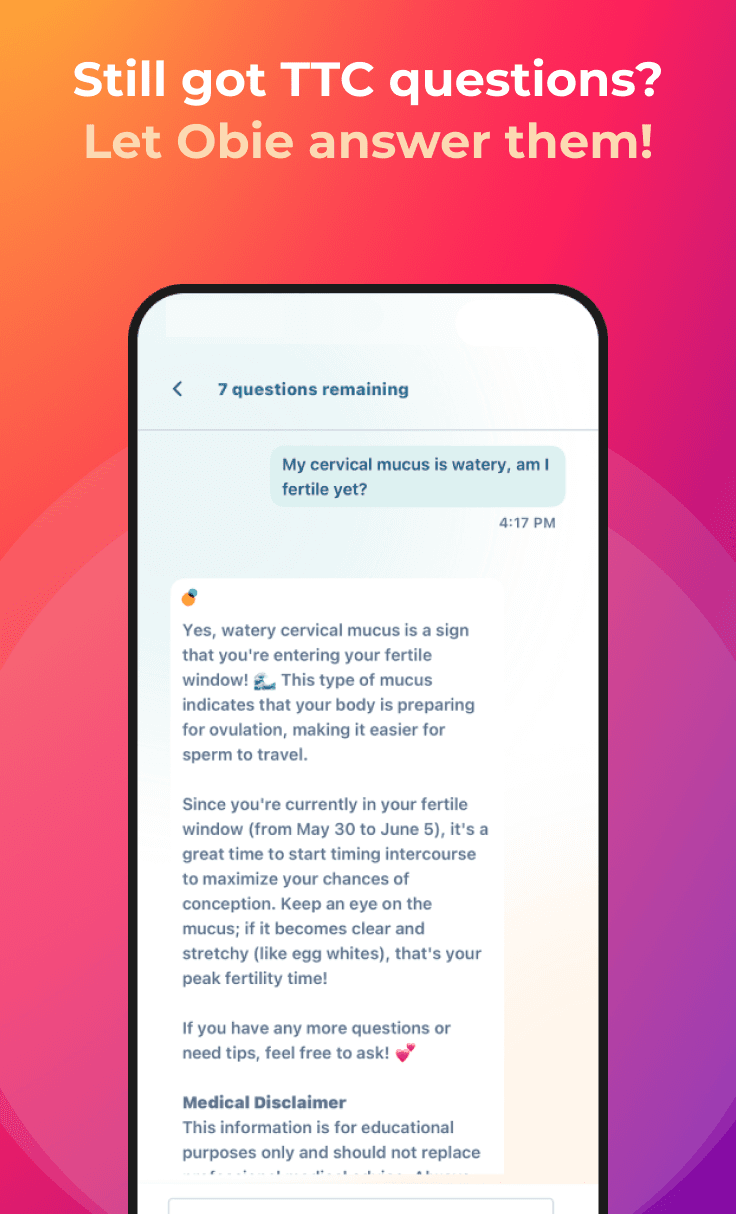How to Get Pregnant After Birth Control in 12 Steps
Contraception
Obie Editorial Team
Questions about getting pregnant after birth control are very common. Read here about 12 steps of what to do:
- The condom: If condoms are being used as contraception, the attempts at conception can begin immediately. Condoms are a onetime use contraception that has no lasting effect on fertility.
- The IUD: An intrauterine device will need be removed before conception efforts can begin. Once the device is removed, follow the steps starting with step 5.
- The birth control pill: The birth control pill will affect the menstrual cycle and fertility when the cycle is complete. The contraceptive pill will need to be stopped before conception can occur.
- The contraceptive injection: With the contraceptive injection, the time period the injection covers will need to elapse before conception efforts can begin. After this time elapses, there may be weakened menstrual cycles for a few months as the remaining medication leaves the body.
- Wait until the end of the menstrual / pill cycle: Some contraception lasts longer than other forms. This is true for the contraceptive injection. Once the contraception coverage has lapsed, there will be one menstrual cycle before you can begin trying to conceive.
- Wait through the next menstrual period: After all contraception has been stopped, it is important to wait one full menstrual cycle before trying to become pregnant. This will cleanse the uterus and prepare the uterus for egg implantation. If the method of contraception is the condom, there is no need to wait as menstrual cycles are not affected by this contraceptive.
- Record your menstrual cycle: Begin recording the menstrual cycles you have and charting the results on a conception calendar. These cycles will help you to predict the optimal time for conception (ovulation). The cycle of menstrual cycles can also predict any abnormality in the cycles which could confuse ovulation prediction.
- Begin ovulation testing: If you are having trouble estimating ovulation, there are over the counter ovulation tests that can be used to predict ovulation. The cervical mucus can also be used to judge ovulation based upon color, thickness and texture.
- Begin attempts to conceive during ovulation: Ovulation is the optimal time for conception. Ovulation usually occurs 14 days after the first day of the menstrual cycle. Many people think ovulation begins 14 days after the last day and thus try to conceive on the wrong days of fertility.
- Record future menstrual cycles and ovulation test results: If more than one attempt at conception is needed, keeping track of future menstrual cycles and ovulation test results will help you to continue trying to conceive on the most appropriate times.
- Continue conception attempts for 6 months to a year: After stopping contraception it can take anywhere from 6 months to a year or more to conceive. If conception takes longer than 6 months to a year, medical help may be needed for diagnostic or therapeutic care.
- Seek medical help: There are plenty of therapies that can help a couple to conceive after birth control has been stopped. An Ob-Gyn will be able to discuss these options. The most common treatments for fertility problems are natural therapies like weight loss, exercise or lifestyle changes.








